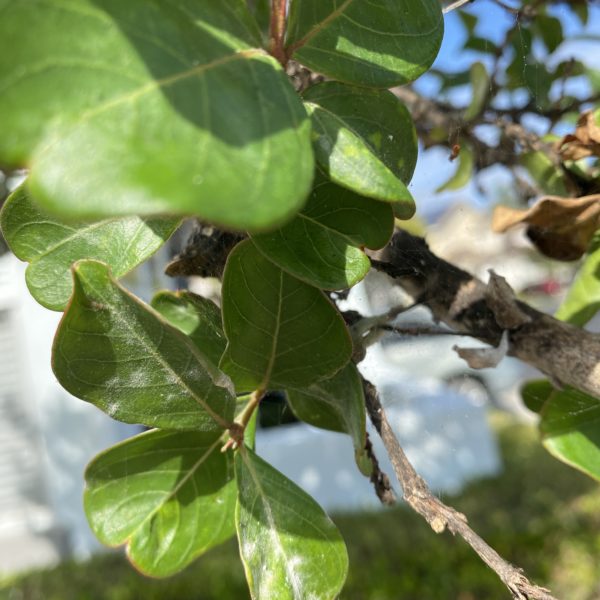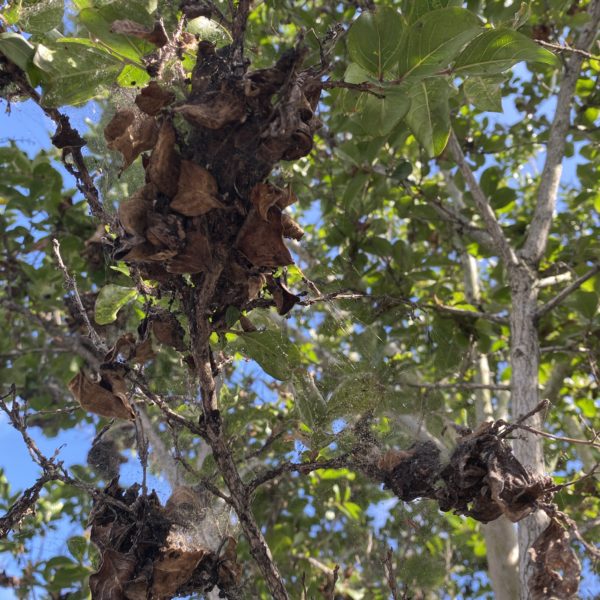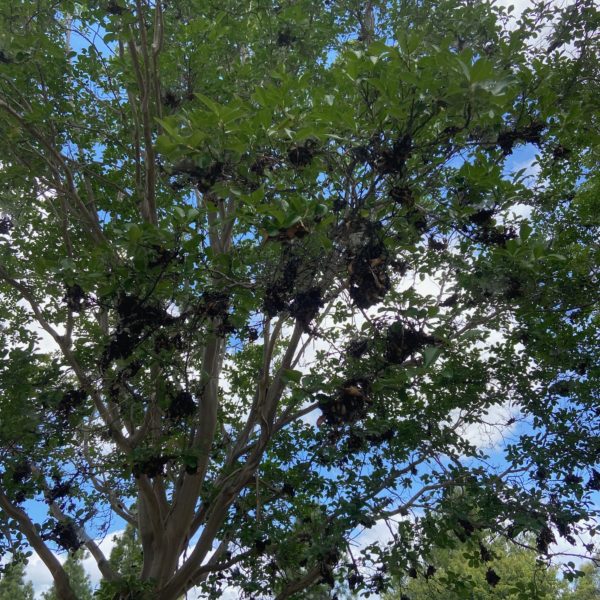Tiny Suckers – Big Damage
Spider mites are tiny (less than 1 millimeter!) but they can do serious harm to landscape plants and trees. While they are technically arachnids, spider mites damage plants similarly to sucking insects like aphids, by piercing leaves to feed. A large enough infestation can cause stunted growth, defoliation, and even tree death. Additionally, because females mature in less than a week under the right conditions, populations of spider mites can grow exponentially in a single season leading to massive and sudden infestations.
Spider mite damage appears similar to that of drought stress (yellowing leaves, defoliation), but a clear difference is the silky webbing spider mites weave on the undersides of leaves.
Proliferation & Prevention
Spider mites thrive and reproduce in hot, dry conditions and are typically at their worst from June through September. Their webbing acts as a sail that carries individuals to nearby trees where new colonies can be established.
Stressed trees are generally more susceptible to infections and pests, including spider mites. The best and simplest way to avoid these and innumerable other arboreal woes is by keeping trees properly watered and maintained.
Because spider mites reproduce so quickly and in such large numbers, it is vital to control infestations as soon as they are identified. Check stressed trees for signs of spider mite infestations and call your arborist right away if you think these critters are lurking on your property.
If you do end up with an infestation, it’s a good idea to budget for treatments in subsequent years since spider mites are often difficult to eradicate. Your tree care company can give you an idea of what kind of financial and time commitment to expect.




